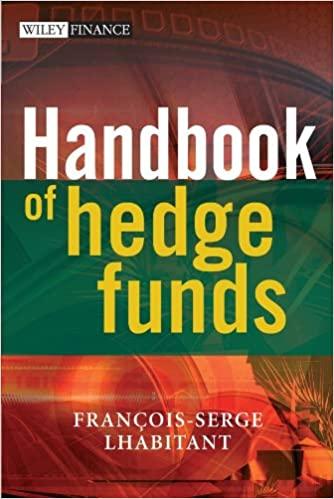Answered step by step
Verified Expert Solution
Question
1 Approved Answer
Question 1: Complete F/S (1 point) 1. Balance Sheet (unit : million $) 2022 2023 Cash and equivalent 50 60 Short-term investment 0 40 Account
Question 1: Complete F/S (1 point)
| 1. Balance Sheet (unit : million $) | ||
| 2022 | 2023 | |
| Cash and equivalent | 50 | 60 |
| Short-term investment | 0 | 40 |
| Account receivable | 500 | 380 |
| Inventories | 1000 | 820 |
| Total current assets | ||
| Net plant and equipment | 2000 | 1700 |
| Total assets | ||
| Accounts payable | 200 | 190 |
| Notes payable | 280 | 130 |
| Accruals | 300 | 280 |
| Total current liabilities | 780 | 600 |
| Long-term bonds | 1200 | 1000 |
| Total debt | 1980 | 1600 |
| Preferred Stocks (400000 shares) | 100 | 100 |
| Common Stock (50000000 shares) | 500 | 500 |
| Retained earnings | 970 | 800 |
| Total common equity | ||
| Total liabilities and equity | ||
| 2. Income Statement (unit: million $) | ||
| 2022 | 2023 | |
| Sales | 5000 | 4760 |
| Operating Cost except depreciation & amortization | 3800 | 3560 |
| EBITDA | ||
| Depreciation & Amortization | 200 | 170 |
| other operating expenses | 500 | 480 |
| EBIT | ||
| Less interest | 120 | 100 |
| EBT | ||
| Taxes (40%) | ||
| Net Income before preferred dividends | ||
| Preferred dividends | 8.0 | 8 |
| Net Income | ||
| Dividends to common | 50.0 | 48 |
| Addition to retained earnings | ||
| Assume 50000000shares of common stock outstanding |
Question 2: Using information in Question 1, please estimate the followings (3 points):
- EPS (earnings per share)
- DPD (dividend per share)
- BVPS (Book value per share)
- CFPS (cash flow per share)
- Net Operating working capital = (cash+A/R+investory) - (accounts payable+accurals)
- Total net operating working capital = net operating working capital + net plant and equipment (or net fixed asset)
- Net Operating Profit After Tax = EBIT*(1-t)
- Return on Invested Capital (ROIC) = NOPAT/Total operating capital
- MVA = market value (= share price * number of share) - total common equity
- Free cash flows
Question 3: please calculate the following ratios (2 points):
| 1. Liquidity |
| Current ratio |
| 2. Asset Management |
| Inventory turnover |
| Days sales outstanding |
| Fixed assets turnover |
| Total assets turnover |
| 3. Debt Management |
| Total debt to total assets |
| Time-interest earned (TIE) |
| 4. Profitability |
| Profit margin |
| Basic earning power |
| Return on total assets |
| Return on common equity |
| 4. Market value (Price $31 per share) |
| PE ratio |
| Price/cash flow |
| Market/book |
Step by Step Solution
There are 3 Steps involved in it
Step: 1

Get Instant Access to Expert-Tailored Solutions
See step-by-step solutions with expert insights and AI powered tools for academic success
Step: 2

Step: 3

Ace Your Homework with AI
Get the answers you need in no time with our AI-driven, step-by-step assistance
Get Started


